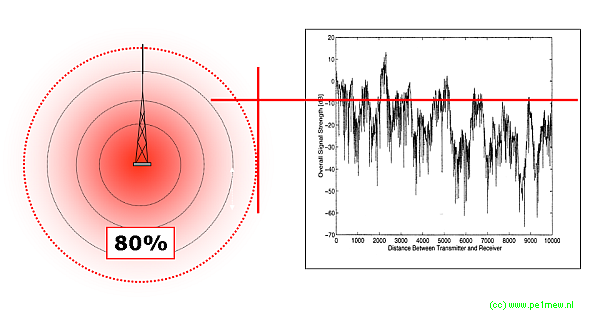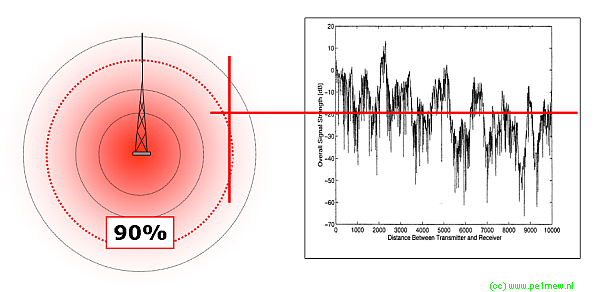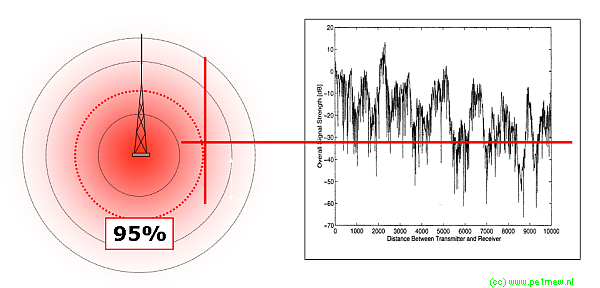|
All radio coverage is based on probability theory. Radio coverage at a specific location from a distant transmitter can be specified for a 50%, 90% or higher probability of successful communication. Radio coverage cannot be guaranteed 100% of the time.
Radio coverage is affected by weather and atmospheric conditions on a continual basis. Rain or snow can affect higher frequency satellite and microwave communication. Temperature inversions can affect VHF and UHF and cause reflections that either increase or decrease signal level at a distant site.
Because of these variables, radio networks rely on a parameter called “Fade Margin”. Fade margin is the safety factor used to determine the level of probability of successful radio communication. The Fade margin is the additional signal, above a receiver threshold, that is not necessary for communication, however, is necessary for reliability prediction.
Fade margins are used in the linkbudget.
The following is an approximate list of common fade margins and probability numbers. Other factors do influence fade margin, including path distance and frequency, however, these numbers give a reasonable appreciation of fade margin.
Percentages refer to time period, as in “50% of the time, signal will be at or greater than the calculated value”.
| Margin over minimum RX level (dB) |
Coverage probability at the cell-edge (%) |
Coverage probability over the entire cell (%) |
| 0 |
50 |
77 |
| 5 |
75 |
90 |
| 7 |
84 |
96 |
| 9 |
90 |
97 |
| 12 |
95 |
99 |
The following images display the effect of a margin to prevent degradation of the received level on the coverage of a cell:



In these images the horizontal red line represents minimum receive level and the blackline the received level. In the situations where the black received line is above the red one the signal is strong enough to be received.
Obviously, the higher the fade margin, the higher the probability that a usable communication signal will be received, and the smaller the coverage area displayed to maintain this fade margin.
For most mobile systems, a fade margin of 6 to 10 dB is acceptable. Critical systems such as police, fire and ambulance may require higher reliabilities and require higher fade margins during system design.
It is worth noting that cellular radio systems and to a limited extent, public trunked radio systems use fade margins of the order of 10 to 20 dB. To keep cellular and trunked telephones small, antennas are small and inefficient; therefore, more signal level is required to maintain a reliable communication path from a cell site
to a cellular telephone.
Coverage for mobile radios will always be greater than for a hand-held radio. The difference is due to the smaller and lower gain antennas and smaller capture area of the hand-held antenna. Hand-held radios also have a lower transmit
power than mobile radios.
Portions of this text are provided by Brian Henderson and can also be found in his Program Operating Guide.
|